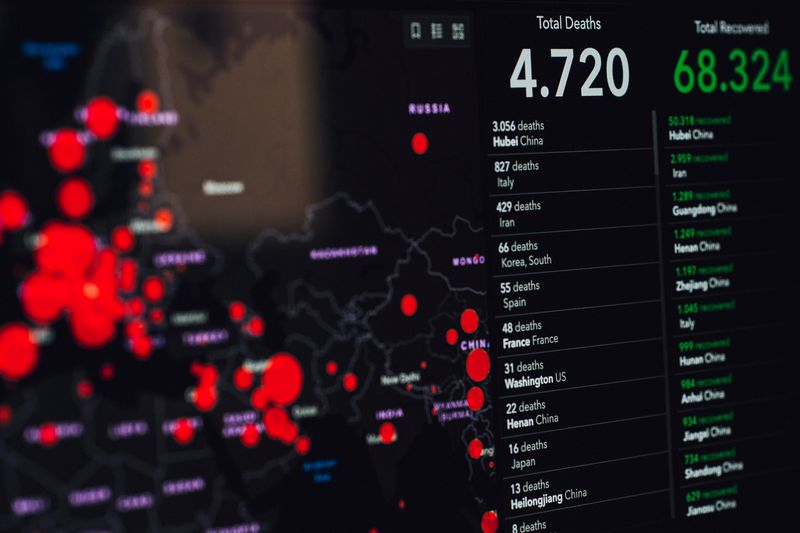Live Moment Intergenerational report spells out Australia‘s future by 2063, with warnings for work, climate and the budget
The “Intergenerational Report”: A Snapshot of Australia‘s Future
The Australian government has recently released the “intergenerational report,” a comprehensive analysis that offers a glimpse into the future of the nation by 2063. The report highlights the major challenges Australia will face in the coming years, including an aging population, climate change, a shift to a caring economy, fragmentation in the global order, and an explosion in digital technologies. While the report serves as a compass for Australia‘s current course, it is not a crystal ball and calls for immediate action to address these challenges.
The Impact of Demographic Changes
By 2063, Australia‘s population is expected to be larger and older. With life expectancy projected to increase and fertility rates remaining low, the median age of Australians will be 4.6 years older than it is today. Nearly a quarter of the population will be over 65, and there will be three times as many people over 85. These demographic shifts will have significant consequences for the economy and the workforce.
The Care Economy and Workforce
As the population ages, there will be a greater demand for health and care services. The report predicts that the care and support workforce will need to double in size by 2050 to meet this demand. This presents a planning challenge that requires more training pathways and better pay for care workers. Additionally, Australia‘s shift towards a care economy will continue to accelerate, with more opportunities for under-represented groups in the workforce.
Productivity and Living Standards
Continuous productivity growth is crucial for improving wages and maintaining services for Australians. However, recent decades have seen stagnation in productivity growth. The report identifies the need for technological advancements, particularly in artificial intelligence, to drive productivity and reinvigorate the economy. The government must focus on increasing productivity to ensure sustained economic growth and improved living standards.
Climate Change and the Economy
Australia is set to benefit from the global transition to net-zero carbon emissions. The country already leads in exporting essential minerals for renewable technologies and has vast reserves that can further drive this industry. However, the impacts of climate change will also affect work conditions and the overall economy. The government must invest in adaptation measures and global decarbonization efforts to mitigate the economic risks associated with climate change.
Geopolitics and Trade
Australia‘s future prosperity will be influenced by evolving geopolitics and the resilience of supply chains. The report suggests reducing reliance on major trading partner China to ensure economic stability. It warns that a fragmenting global economy could complicate climate action and highlights the importance of reducing barriers to trade.
Editorial and Advice
The release of the intergenerational report serves as a wake-up call for Australia. It lays out the challenges the nation will face in the coming years and emphasizes the need for immediate action. The government must prioritize tax and spending reforms to address the serious budget deficits forecasted till 2063. Growing productivity and investing in technological advancements are essential to drive economic growth and improve living standards.
Furthermore, the government must take proactive measures to address the impacts of an aging population. This includes providing opportunities for older Australians to work if they choose to, without compromising their well-being. Investing in the care and support workforce is crucial to meet the growing demand for health and care services.
Additionally, Australia must seize the opportunities presented by the transition to a net-zero carbon economy. The country’s rich reserves of critical minerals for renewable technologies can be leveraged to drive economic growth while also mitigating the effects of climate change. The government must prioritize investments in adaptation measures and support global efforts for decarbonization.
In addressing these challenges, Australia must also consider the changing geopolitical landscape and ensure the resilience of its supply chains. Reducing reliance on particular trading partners can help safeguard the nation’s economic stability and adapt to evolving global relationships.
Conclusion
The intergenerational report paints a picture of Australia‘s future with a larger and older population, major workforce and climate challenges, and the need for increased productivity. The government must take immediate action to address these challenges, including tax and spending reforms, investments in technology and innovation, support for the care and support workforce, and commitment to mitigating climate change. By embracing these changes and taking proactive steps, Australia can shape a future that is both prosperous and sustainable.

<< photo by Photoholgic >>
The image is for illustrative purposes only and does not depict the actual situation.
You might want to read !
- Road Chaos: Advanced Traffic Management Collapses, Leaving Commuters in Disarray
- Sam Kerr Kicks off Aussie Kid’s Football Academy: Building the Future of the Beautiful Game Down Under
- Kostya Tszyu’s World Title Showdown Ignites Explosive Battle of the Century
- Tackling Climate Change: Australia’s Top Priority in the Intergenerational Report
- The Australian Stock Exchange Primed for Growth as Wall Street Shines; Nvidia Thrives and Australian Dollar Surges
- Roaring Success or Nuclear Fizzle: Examining Box Office Battles between Barbie and Oppenheimer
- “Gold Coast: A Shining Beacon for the 2026 Commonwealth Games”




